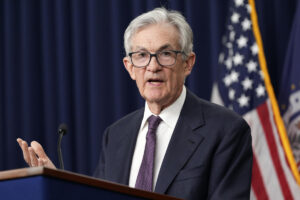November Inflation Report: A Mixed Bag for the Federal Reserve
Recent data reveals that the Federal Reserve’s preferred inflation measure has shown signs of cooling in November, although inflation remains persistently elevated. According to the Bureau of Economic Analysis (BEA), the month-over-month price increases have decreased, but the Fed’s ongoing challenge to rein inflation back to its 2% target persists.
In the most recent reading, the core Personal Consumption Expenditures (PCE) index, which excludes the often volatile food and energy prices, increased by only 0.1% from October. This marks a decrease from the previous month’s gain of 0.3%, representing the slowest pace of growth since May. The modest increase was slightly below economists’ expectations of a 0.2% rise, emphasizing the ongoing concerns about sticky inflation, especially in the service sectors, including housing and utilities.
Jeffrey Roach, chief economist at LPL Financial, commented on the surprising numbers, stating, “November inflation was more benign than expected, but the stickiness of some categories supports the Fed’s hesitancy to materially lower rates next year.” This highlights a crucial tension for the Fed as it balances the economic growth fueled by strong consumer demand—largely bolstered by income growth and higher portfolio values—with the need to maintain inflation control.
Year-over-year, core prices rose by 2.8% in November, aligning with October’s readings but falling short of Wall Street’s anticipated 2.9% increase. The overall PCE index reflected a 2.4% rise year-over-year, a slight increase from 2.3% in October, yet still trailing Bloomberg’s forecast of 2.5%. Such discrepancies highlight the unpredictable nature of inflation metrics as the economy faces varying pressures.
Earlier November data also revealed a persistent trend in inflation. The core Consumer Price Index (CPI) indicated a 3.3% annual increase for the fourth consecutive month, while the core Producer Price Index (PPI) showed a 3.4% rise year-over-year, up from 3.1% in October—again outpacing economist expectations of 3.2%.
In a press conference following the decision to cut interest rates by 25 basis points, Federal Reserve Chair Jerome Powell noted the struggle to combat inflation effectively. “We’ve had a year-end projection for inflation, and it’s kind of fallen apart as we approach the end of the year,” he mentioned, acknowledging the Fed’s challenges in curbing inflation as the year closes.
Looking ahead, the Fed’s Summary of Economic Projections updated its forecast for core inflation, now estimating it will peak at 2.5% next year before possibly cooling to 2.2% by 2026 and reaching the target of 2.0% by 2027. This revised outlook is anticipated to weigh on markets as investors remain uneasy about future monetary policy directions.
Adding another layer of uncertainty, the recent election of Donald Trump as president could trigger shifts in economic policy that may reignite inflation. His proposed measures—such as increasing tariffs, tax reductions for corporations, and limiting immigration—are all viewed as potentially inflationary, complicating the Fed’s road ahead.
As Powell stated, "We need to see what [the policy changes] are and what effects they have." The Fed is in a state of contemplation, recognizing that a clearer picture of the economic landscape will emerge only as policies evolve.
In summary, the current inflation readings and the Fed’s responses embody a complex dynamic of economic growth and inflation control. Investors and consumers alike should remain agile, monitoring ongoing economic developments as we navigate through this uncertain financial environment. For more insights into the financial landscape and economic forecasts, stay connected with Extreme Investor Network.

